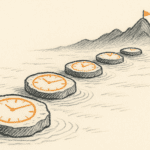No company can be all things to all customers
“”It is very true that we do not have the high-end ‘mind share’ product, as we speak, but of course we are working to get there,” said Olli-Pekka Kallasvuo, Nokia president and chief executive.
At its investor day late last year, Nokia hinted it would produce major new devices this year. Analysts reckon it is hard at work on a so-called ‘iPhone killer’.
But Kallasvuo said it is not just about one expensive handset. “We are going for the consumer market, we are going to the business market, we are going to the low end, we are going to the developing markets.”
Nokia has seen its commanding lead eroded by the likes of Apple, Blackberry maker RIM and devices sporting Google’s new Android software.”
The Guardian (15 February 2010)
Uh oh, Nokia – bad idea. Very bad idea.
Nokia’s boss, Olli-Pekka Kallasvuo, effectively said in a recent interview that he wants the company to be all things to all consumers. The mobile-phone giant, he says, intends to aim for high-end and low-end handset markets simultaneously. It wants to cater for the business market and the consumer market. It wants to dominate both advanced-economy and developing markets.
Whenever I hear a CEO spouting that kind of ambition, alarm bells start going off in my head. All my experience as a strategy advisor suggests a simple truth: the company that tries to be all things to all customers in all markets, fails.
Until quite recently, banks were all talking about the ‘supermarket’ approach to banking: the idea that customers want to satisfy all their financial needs – retail banking, investment banking, insurance and brokerage – in one, trusted, mega-institution. Citibank pioneered this approach ten or so years ago, and it became received wisdom for a while. Well, the credit crunch put paid to that idea. Now, both regulators and boards of directors are recognising the futility of the concept. Regulators have forced megabanks to break up into their consituent parts. And customers have voted with their feet.
Why so? The supermarket approach sees a company with a strong customer connection as a shopfloor, a channel into which many products can be stuffed. Unfortunately, the quality of products suffers. Customers soon realise they would get better insurance and brokerage advice from dedicated specialists, not from the one-size-for-all approach of the huge institution.
Another company tried the all-things-to-all-people approach. It is called Toyota. It lost the lower end to the Tatas and Hyundais, who can focus intensely on very-low-cost vehicles and have done so in key markets like China and India. Its forays into the upper end, via its Lexus brand, never really worked. The Lexus may have appealed to Toyota buyers looking for a status upgrade, but it never really enticed high-end buyers away from their Mercedes and BMWs.
Back to Nokia. I had a Nokia phone, and I was reasonably happy with it. Unfortunately, Nokia missed two important boats. It failed to appreciate the growing use of mobiles as e-mail devices – and Blackberry took that market. It also failed to see that the phone would become an all-in-one consumer gadget used from everything from video to music to navigation to gaming. Apple got that, and its iPhone stormed away with that market.
So when Nokia now talks about reclaiming the high-end smartphone market, I can only shake my head. That battle is being fought by others. Only a massive technological breakthrough would whack the current leaders.
The essential point is this: customers respond to products that match their specific needs. Competitive advantage is a devilishly difficult thing. Achieving it for one set of customers in one socioeconomic group is hard enough; achieving it for all is all but impossible.

Buy Sunny Bindra's new book
The X in CX
here »
Popular Posts
- NY’s wake-up call to the old guardNovember 9, 2025
- How to listen, really listenNovember 16, 2025
- Save your strength for repairsNovember 2, 2025
- Here’s why you should become foolishNovember 30, 2025
- Is AI hiring your company into oblivion?November 23, 2025















